BREAKING NEWS – ube Launches Today at DEMO
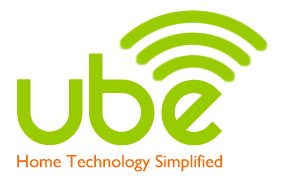 For several years Utz Baldwin worked to further the cause of the Custom Electronic Design & Installation Association (CEDIA), first as a member and – from 2008-2011 – as CEO. As the head of the CEDIA, Baldwin worked hard to ensure that the organization was aware of, and responsive to, the needs of its members and other associated stakeholders. However, ousted from the organization in 2011 under circumstances that were never fully made public, Baldwin seemed to disappear from view…until now.
For several years Utz Baldwin worked to further the cause of the Custom Electronic Design & Installation Association (CEDIA), first as a member and – from 2008-2011 – as CEO. As the head of the CEDIA, Baldwin worked hard to ensure that the organization was aware of, and responsive to, the needs of its members and other associated stakeholders. However, ousted from the organization in 2011 under circumstances that were never fully made public, Baldwin seemed to disappear from view…until now.
Now, Baldwin is back…and his new company, with the happy-go-lucky name ube (pronounced yoo-bee)…is launching what they promise will be market-changing “disruptive technology”…
This week in Silicon Valley, DEMO – a popular tech conference – kicks off. Produced by media conglomerate IDG, DEMO is known for introducing tomorrow’s technology and their inventors to the world – and perhaps more importantly – to the venture capital and investment community. Many well-known tech brands such as TiVo, Salesforce.com, WebEx, E-Trade, Palm and more were introduced to the world at DEMO. This year, DEMO will help the world meet ube…and things in our industry may never be the same.
Ube’s tagline is “Home Technology Simplified” and at first blush, it would appear that this is not just marketing hype. Ube is a system based on a simple – and free, by the way – smartphone App which is designed to provide easy and intuitive control of IP-addressable devices via your iPhone or Android mobile device.
Simplicity isn’t simple…

But don’t let its simplicity fool you! Ube can interface with a universe of over 200 available high-tech IP-addressable devices via its graphical user interface (GUI – pronounced “gooey”). Devices such as smart TVs, set-top boxes, AV receivers, DVD players, thermostats, garage door openers and more are all easily set, changed, and adjusted with just a tap or swipe on your smartphone’s display.
If the end-user is at their home, then ube simply works via their wireless home network. If, on the other hand, the end-user is away from home, ube provides full system access and control via its ube Cloud SaaS (software as a service) capability.
But, you might ask, what about my various lamps and lighting products or other devices without built-in IP-addressability? Ube has solved that problem as well offering what they call “appcessories” that will be available right from launch. These appcessories include a Smart Dimmer, Smart Outlet, and a Smart Plug. Simply put, integrating these appcessories adds intelligence with IP-addressability and wireless capability to your existing devices and allows you to instantly assemble a complete system fully controllable from your favorite smartphone.
Who are these guys?…
Ube is a start-up company that is the brainchild of several technology industry personalities from disparate backgrounds that realized that they had a similar vision of where the technology industry was heading. Perhaps best known is ube’s CEO, the former CEDIA CEO Utz Baldwin, who told us in a telephone interview that ube is an idea whose time has come.
“One of the things that I really focused on [after leaving CEDIA] was trying to solve the problem…the issue that the connected home has faced for the last two decades is that no real open standard exists,” Baldwin explained. “And the choke-hold to realizing true mass adoption of smart technologies had to do with all of the proprietary hardware that was out – the fact that systems required a lot of low-voltage wiring, specialized installation, and custom software for every single home. And following that model, we’d never see expansion of the total available market.”
Baldwin went on to add that CEDIA’s most recent market study identified that, overall, their channel was a $13 billion market. The majority of that $13 billion dollar business was to service very wealthy clients living in homes worth more than $750 thousand dollars, Baldwin told us. And while he says that over the years other companies have tried to broaden the market for our products, they have not been particularly successful.
“The approach has still been the same as it was in the past, using some type of a closed, proprietary system where they try to hold the consumer captive by either a recurring revenue stream or some type of dedicated hardware in the house,” Baldwin emphasized.
Ube, Baldwin says, is a completely different approach from a completely different type of a company. And the mark of a unique company is often in selection of the management team they’ve assembled.
Ube’s management team includes:
- Utz Baldwin, Co-Founder & Chief Executive Officer (Formerly CEO of CEDIA)
- Glen Burchers, Co-Founder & Senior Vice President of Marketing and Business Development (Formerly in IC development at Freescale Semiconductors)
- Jack West, Co-Founder and Chief Technology Officer (Formerly a chief architect at IBM)
- Peter Fossick, Senior Vice President of Brand Strategy & Industrial Design (Formerly in service & industrial design)
- Ramki Anna, Vice President of Hardware Engineering (Formerly VP of Engineering and Product Development at Tom Tom)
- Kathy Hlavac, Director of User Experience
A different platform…
Baldwin told us that ube has created a different type of platform “utilizing the processing power in today’s mobile devices which is significantly greater than most processors that are found in homes today.” The ube platform also leverages what Baldwin calls the “ubiquity of Wi-Fi – it is the most widely adopted radio protocol in homes at almost any price point.”
And finally, ube adds their SaaS or cloud technology which Baldwin says helps to create an exceedingly simplified system.
“So we’re really leading in the evolution of the connected home because we are eliminating any unnecessary hardware such as central controllers, bridges, or dongles,” Baldwin said emphatically.
A user interface really designed for users…
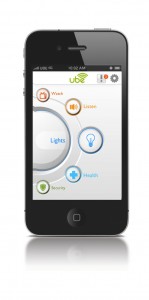
Another element, perhaps a critical element, in the ube system is their user interface, which Baldwin describes as quite unique. “It’s very dynamic in nature,” he said. “And when a user adds a new system, it’ll appear. But if they don’t have it, it’s not there to clutter up the screen.”
So, for example, if the user doesn’t desire to use ube to control their lighting system – those controls or icons do not show up on the screen at all. The App presents for control and usage only those items that are part of your actual system. And thanks to “push” technology, when a device is connected to the system, ube is notified of its presence and automatically adds its configuration to the user interface. And the system automatically notifies the user that the new item/system has been identified, prompting them to quickly add and name the system for immediate use.
Secondly, the user interface incorporates “gesturing” into the design to make operating the control feel more natural and humanistic. For example, if you’re watching TV, “…you simply swipe on the screen [of your smartphone] up or down to change the channels, or clockwise and counter-clockwise rotation to adjust your volume,” Baldwin said.
Tasty GUI…
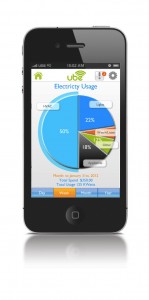 The Apps user interface is fairly intuitive, starting with its visual “jog dial” on the screen which is rotated to select a sub-system to operate. From there you can select, for example, “lights” to control lighting levels. Then the user selects the room in which they want to control the lights, and a simple slider lets you control the lighting level.
The Apps user interface is fairly intuitive, starting with its visual “jog dial” on the screen which is rotated to select a sub-system to operate. From there you can select, for example, “lights” to control lighting levels. Then the user selects the room in which they want to control the lights, and a simple slider lets you control the lighting level.
But there is another factor at play in the ube system that makes it even more powerful.
“Our software-as-a-service is communicating with every device that sits on your network, as well as every button press from every user that interacts with the App itself,” Baldwin interjected. “So we’re aggregating a great deal of data on how users interact with the technology around them. And doing so provides a great deal of valuable feedback and information for the consumer from things like energy usage – you can see how much energy your air conditioning is costing you versus your lights.”
Interestingly, the SaaS can even tell consumers when their kitchen lights are costing them more this month than last month, “and offer ways to help,” Baldwin added, in a bit of a tease.
“So we have created a system that makes energy management truly actionable today, which is also quite significant.”
The rise of the machine…
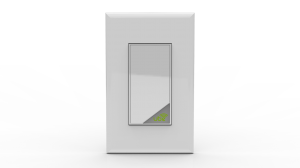 It is clear that ube’s management does not feel constrained by the industry conventions as they exist today. In fact, Baldwin and co-founder Glen Burchers (who was joining us on the telephone interview) made it clear that they intend to move the ball down the field.
It is clear that ube’s management does not feel constrained by the industry conventions as they exist today. In fact, Baldwin and co-founder Glen Burchers (who was joining us on the telephone interview) made it clear that they intend to move the ball down the field.
“We believe that the time has come to prove that machine-to-machine communications is the future of the connected home,” Baldwin proclaimed. “So we’re moving the intelligence into the device itself – where it should be. And we’re launching three energy and lighting products that include a new smart dimmer, a smart electrical outlet, and a smart plug.”
Smarter than your average smart device…
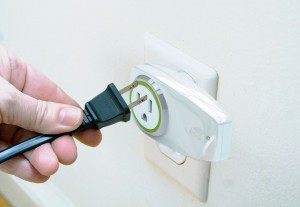 And smart they are! All three devices feature Wi-Fi connectivity, a 32-bit ARM Cortex processor running Android OS, and ube plans to publish open APIs for the devices which opens the door for application developers to access and build upon the power of these devices.
And smart they are! All three devices feature Wi-Fi connectivity, a 32-bit ARM Cortex processor running Android OS, and ube plans to publish open APIs for the devices which opens the door for application developers to access and build upon the power of these devices.
Both Baldwin and Burchers made it clear to me that they really support a forward-looking, open architecture strategy in device and system planning. To that end, and in contravention to what you might expect, they told me that they DO NOT plan to accommodate legacy technologies.
“We are not supporting legacy products,” Baldwin proclaimed, somewhat defiantly. “We are a forward-looking company, so we’re not supporting things like RS-232 and IR…knowing that Moore’s Law applies here and things like IR and RS-232 are short-lived. We are moving into a fully IP-centric world, so we’re looking ahead.”
Time to see the light…
One of the key sub-systems that ube wanted to address was lighting. Ube’s management felt as though lighting, though the third most popular sub-system after media rooms and multi-room A/V systems were not being adequately addressed. Glen Burchers told us that there’s been a “hole” in the industry with no IP-addressable, Wi-Fi interfaced lighting products.
“Today we’re launching at DEMO, and we’ve got multiple dimmers talking to each other, we’ve got a pretty cool user interface on the dimmer itself,” Burchers explained. “It is a capacitive multi-touch interface, the same as you would see on an iPhone or Android phone where you slide a finger up to raise the light intensity, slide a finger down to lower it. Two fingers up raises all the lights in the room and two fingers down lowers therm – and then a pinch to close turns all the lights in the home off.”
Of fun and funding…
At DEMO, ube will have a full demonstration system which they believe will have a big impact on the audience. The co-founders were clearly excited about appearing at DEMO which will not only expose their technology to the market – but will also allow them to meet with venture capitalists, as the company is seeking further funding.
The company is also launching an appearance on the crowd-funding site Kickstarter. However, this is less about funding, and more about getting direct and immediate feedback from the technology enthusiasts that commonly back projects on the site.
Is ube targeting the CEDIA channel?…
Baldwin seemed a little sensitive here…but he sees a clear delineation between how ube is positioned and how the typical CEDIA member is poitioned. “That industry [the CEDIA channel] exists because of the complexity in technology,” Baldwin said. As far as the CEDIA member, “they serve affluent homeowners in larger homes.”
“We believe that we can expand the total available market by 10X,” Baldwin continued. “We’re reaching homes with a value of $300,000. I don’t suspect that we are going to be competing with a typical CEDIA member because our product is not designed for a 10-thousand, 20-thousand square foot estate home. Those projects still require a great deal of integration. And, typically, very wealthy Americans are going to hire somebody to do things for them.
But the reality is that there is likely to be some crossover with lower or entry level customers of the CEDIA channel. Baldwin could not deny that there may be some crossover; however, he did not seem to feel that this would be a huge factor.
Money, money, money…
Monetization of the company will come largely from the aggregation of Big Data. There will be advertising, although the co-founders promise it will be subtle. There will be in-App purchases adding to revenues. And the company will package and sell the data they collect.
Because their system monitors the devices and the usage patterns of consumers, the company will possess a mountain of usability data. This data will be very valuable to a variety of manufacturers and marketers.
But also, ube will be able to creatively generate revenues through unusual means, such as offering coupons or upgrades based on what their systems observe in the users system.”We’re essentially a software and Big Data company,” Burchers said.
For example, if a lighting system has its efficiency decline, the user could receive a coupon from ube for a 25% discount on Philips light bulbs at Home Depot. Given the variety of systems that ube can control in the home – this could offer a huge opportunity for revenue generation for the company.
How will ube be distributed?…
Ube plans to focus on tightly defined distribution channels. First, of course, their App software will distributed on their respective App stores with largely viral distribution. Then, interestingly, the company plans to target to the major home builders.
“We’ll have a sales force targeted toward new home construction,” Burchers said. “Because we know that home builders want to do what car manufacturers have already done which is to add technology to their products that is easy for the consumer to adopt.”
The second market they will target will be through the home improvement retailers such as Home Depot and Lowes. “We feel these products would be better suited there than they would at Best Buy,” Burchers explained, saying that they believe that a large number of do-it-yourselfers will install the systems for themselves.
And the third major market that the company will target a sales force at is electricians. The lack of any programming requirement should make ube an attractive choice for electricians to offer their customers.
Finally, there will also be sales from the company directly on the Internet as well. However, Internet sales will largely be offered for convenience, not aggressively driven, the co-founders told us.
Pricing and availability…
The App is free and will be available sometime in November in their respective App Stores. The iOS version will be available first, with the Android version following within about two weeks.
As for the appcessories, the smart dimmer will sell for $60 retail – and the smart electrical outlet and smart plug will each sell for $55 retail. The hardware will be available sometime in the late first quarter of 2013.
Ironing out the irony…
But, I asked Baldwin, isn’t there a degree of irony to your personal involvement in a disruptive technology that – at least at some level – impacts the channel in which he once was a major factor?
“This is not designed to damage or disrupt the CEDIA space,” Baldwin protested. “That’s not the goal here…the goal is to expand the total available market. The more consumers that know that these technologies exist and are obtainable, the better it is for the entire industry.”
Maybe, but the symbolism is hard to escape. In the meantime, we plan on following the developments at ube closely…they just may be on to something.
For more information on ube, see: www.myube.co.
Are you at DEMO?
Ube takes the stage at DEMO today at 3:45PM with a live demonstration of the ube system. You can also find ube in booth D17 in the DEMO Fall 2012 pavilion.


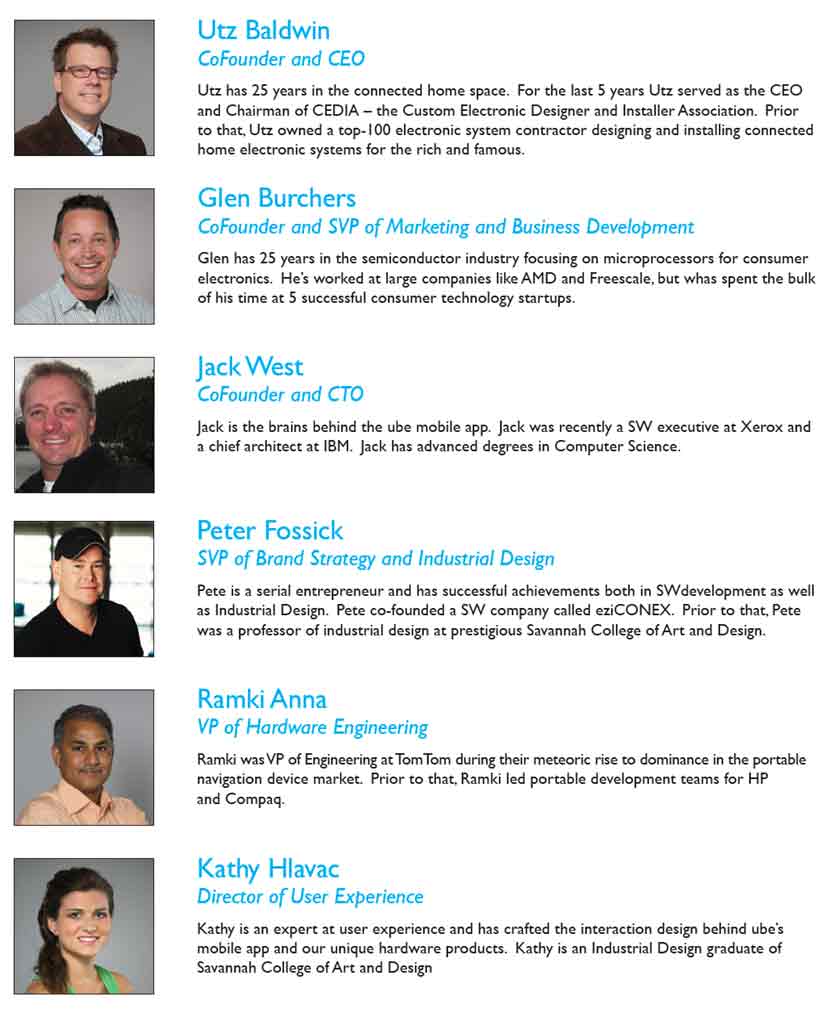


Leave a Reply